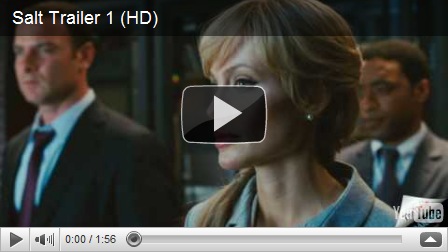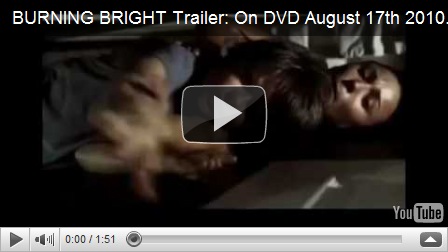(2010)
Dir: Carlos Brooks
What’s new pussycat? Woooooooooooh wooooooh wooooh woooh wooooh! So go and powder your cute little pussy cat nose.
The ‘Slasher’ part of the horror picture has been in need of something new for a while now. Who would have thought that replacing Michael Myers with a tiger would work so well?
In Burning Bright, Brianna Evigan, of Step Up 2 fame, is the dutiful sister caring for her autistic brother. Their scumbag stepdad, Garret Dillahunt, who also happens to run a zoo, unleashes a recently purchased tiger into the house where his step kids are sleeping, hoping to get all of his wife’s inheritance. Oh, and there’s a hurricane outside. So all the doors and windows are boarded up.
There’s no way out.
It’s a set up that, for all its faults, doesn’t feel contrived. Yes, there would be more effective ways to off the kids, but then we wouldn’t have a film would we? Plus, Evigan is rather pleasing on the eye in her underwear.
She is no Jamie Lee Curtis. Not because of her acting, but because she is no scream queen. For a woman being pursued by a psychotic Shere Khan, she is surprisingly stoic. Almost Jodie Foster like. And this tiger is creepy. Its eyes turn it into something other than a hungry predator. It becomes Jason Voorhees. Carlos Brooks does for tigers what Steve Spielberg did for velociraptors in the now classic kitchen stalk in Jurassic Park. If only Burning Bright wasn’t stretched out over 86 minutes, it would probably be just as memorable.
As it is, such a light plot is difficult to sustain. The overarching story isn’t engaging, and the chase is all that matters. What it does showcase, is a talented young director in Carlos Brooks, who displays a real eye for tension and, if given something fleshier to work with, could possibly produce something special.
Burning Bright succeeds in little more than making tigers scary, but we Jungle Book fans already knew that.
** ¾ / *****
“Where’s the maaaaaan cub?”
***********************************************************************************
What other animals are left out there waiting to break in your house and tear up your furniture?
You’ve seen snakes on a plane. Now witness tiger in a house. I’m still waiting for bear at a wedding. Or geese at a luncheon. Go check out Black Sheep for sheep at a farmer’s convention. If only Sammy L could have turned up at some point during this film. The tiger wouldn’t have look so pleased if it had got a can of whupass opened on it. Ah well, c’est la vie.
The premise of the film is rather daft. The difficultly of shooting a tiger in the face is something I think we can all appreciate and the lovely what’s her face from step up dance on the streets 2, comes to realise this all too well. When she’s face to face with Tigger she manages to miss him with such amazing regularity that she might as well be firing blanks. That the tiger doesn’t actually lose patience and rip her face off is I think amazing given the circumstances.
I’m not sure when the expression ‘hungry for fame’ was first coined but never before has is seemed more apt than in this film. It is often banded around like a terrible old cliché in Hollywood. Although not normally is it actually accompanied by genuine slathering and big sharp pointy teeth. The director must be applauded therefore for persuading Brianna Evigan to co-star alongside her man-eating tiger counterpart. The point in the process when they all had to sit down with the lawyers and sign up an insurance contract must have been very interesting indeed around about the line which read – ‘by the way, this is a real tiger not some crap CGI one’.
This explains I suppose why the tiger doesn’t feature all that prominently. It’s a shame of course that such a premise for a film can’t transpire to what comes up on screen. It really is because this film had future cult classic written all over it. I still liked it but more in a fun, late night, potentially drunken or at least drowsy capacity.
*** 1/2 / *****


